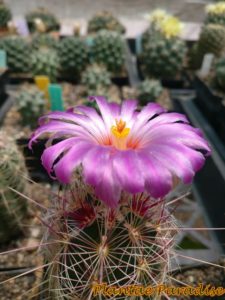 Kya Yeh Plant Chalega? This is a question which is forced upon me, many a times since last 8 years, as I have been commercially growing ( or honestly putting it – trying to grow !!!!) plants. In my initial years I used to gather all my scientific wit and whip it up with knowledge of Indian Meteorology and Geography . Added to that would be a thin top dressing of my knowledge about plants. Well, I would churn out a solution. And make a sale too.
Kya Yeh Plant Chalega? This is a question which is forced upon me, many a times since last 8 years, as I have been commercially growing ( or honestly putting it – trying to grow !!!!) plants. In my initial years I used to gather all my scientific wit and whip it up with knowledge of Indian Meteorology and Geography . Added to that would be a thin top dressing of my knowledge about plants. Well, I would churn out a solution. And make a sale too.
Of late this question is still asked at least two to three times a day on my posts or by people who come and buy plants from our nursery-Plantae Paradise. The origin of this question is obviously from lack of knowledge of buyer and a lacuna in the knowledge / assistance given by the seller. ( And yes, the question does bug me, (to put it very lightly!).
And then there are these Super Wise Guys who will comment on a facebook post that a particular plant will not CHALEGA, killing not only a sale but also a joyous moment in the life of a person wanting to buy the plant that was posted. I think this negative response posted by SWGs is not only lacking in intelligence but is grossly incomplete as a response. It kills the charm of experimenting, experiencing and learning.
Anyways, here are my honest thoughts about it. People have a tendency to collect things. A collection of sorts converts into a hobby. A challenging hobby to be satisfying makes you yearn for more of stuff which is difficult to own and can be talked about, shown , displayed, posted upon facebook, instagram, WA etc. Then there will be some stuff required to be added to the collection which signifies that you have arrived or you have the requisite skills. OK, exceptions who like to keep their collections private are always there but like I said they are exceptions.
Same thing applies to plants. In the process to collect something different, something rare or exclusive we dive into EXOTICS. And the question, ‘Kya yeh plant chalega? pops up. What is an EXOTIC? Dictionary meaning -“originating in or characteristic of a distant foreign country”.
Therefore, when you get exotics which originate in some other continent, their needs are going to be different. And if they could easily grow here, they would be growing everywhere like grass and would be flooding the local nurseries too. So you have to take it up as a challenge and try to make the plant as comfortable as you can and both you and the plant have to learn to adapt. Besides our country has so diverse regions with great weather extremes that it becomes difficult to give a workable solution for one plant as the solution may be good for North and not so good for South and may be drastic for East.
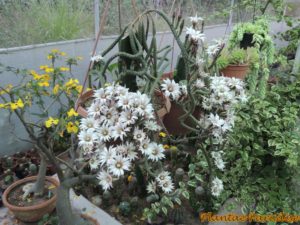
A GUIDE TO REDUCE MORTALITY
Kill the Cliches . Most nursery outlets in towns are just trading posts. They buy n sell plants. They keep them in same light and water conditions. Plants come and plants go. They usually have the following set of answers for all questions :-
- Plant Chalega? – Bahut sale hota. (Plant will do well as lot of sales of the same plant).
- Watering frequency and quantity – Twice or thrice a week or a fixed frequency. OR Just a light spray . or half a glass etc.
- Feeding – one spoon of bone meal or vermicompost or whatever they are selling.
- Type of plant – Indoor – but can survive outdoors depending upon what you want to hear.
- Light requirements – show it sun just twice a week or once in three days or similar such statement.
- Light intensity – light shade or full sun again depends upon what u want to hear.
- Planter – any size saleperson has to sell regardless of size or material.
- Need to re- pot . Some equally vague answer.
A Grower’s Response :-
A good looking plant attracts and sells. Everyone is attracted to newness and hence exotics. To keep a plant forever with you, you must read about it and must read about the origin of plant keeping in mind the terrain, climate and local conditions around it. See pictures of its wild relatives growing in nature. It gives correct perspective. Example- Sometimes people think that most cacti and succulents can tolerate harsh direct sunlight. But when you see pics, you will often realize that some grow only in shadows of rocks or of bigger plants or in gullies and rock crevices. Or that Airplants need lot of water which translates into their being kept wet most of the time leading to their rot. Remember high humidity does not translate into wetness at home. You have to simulate conditions to match the environment the plant would like to grow in. You have to do other things like clustering plants with high transpiration rates like ferns together, keeping wet bricks around plants and maybe use coolers for fan and pad humidity etc.
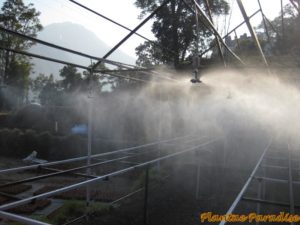
Watering frequency . A seller cannot prescribe a watering frequency for a particular plant simply for the matter that it depends upon , shape /size of pot, type of media, where you have located it , material pot is made of, how much sunshine falls on it etc. Please don’t go by recommendations of the sales man who just wants to move on to next customer. The thumb rule is – When you water- water thoroughly. Water should run through the pot. Remember most of the fine roots are at the bottom of the pot. If media is not porous, water will never reach the fine fibrous roots which do most of the uptake. Misting once in a while is good as it cleans the skin, the stomatal openings but it cannot replace a thorough watering. If you want to reduce watering frequency, you can insulate pot and also use mulch on soil to reduce evaporative losses. For next watering you need to look at the plant’s body and leaves. Are they turgid or drooping? Water when you feel they need water. Soon you will fall into a rhythm with your plants and you will hear them talking to you.
Feeding. You have to understand what each feed does and how. If you know the correct mechanism you will have less wastage of effort and money. Say for example foliar sprays should be ideally mixed with silicone based surfactants. This not only spreads the spray on leaf but also helps in stomatal absorption. If you have to mix solid fertilizers or manures you should mix them when preparing media for potting or re-potting a plant. Simply adding 2 spoons to the topsoil doesn’t really help much. So get involved in the mechanics of fertilization. Make an yearly schedule for your plants. Give them the works like , foliar feeds, soil drenches , growth promoters, amino acids, seaweed extracts, humic acid apart from regular fungicide or pesticide. You must feed your plants only when they need them – ie, in growing period and not in dormancy. Weather too should be considered. In hot and humid weather avoid giving additives like humic acid or organic extracts to cacti and succulents as it will increase chances of rot. Make your schedule by observation and experimentation. After all you are going to stick with this hobby life long. Yes, most plants do without all these feeds. But see the difference after feeding them. You will realise that most of the plants that people grow are malnourished!! Also remember that plants that come to you from nurseries have been pumped with expensive feeds to make them competitive for market and after a few weeks they will start losing charm if you don’t pamper them.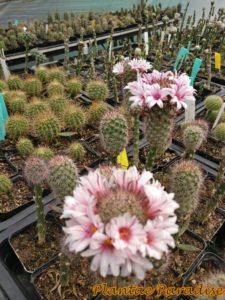 Light requirement Light is source of food and energy for plant. There is no concept of indoor or outdoor plant in nature. Parameters of light as per plant requirement could be –
Light requirement Light is source of food and energy for plant. There is no concept of indoor or outdoor plant in nature. Parameters of light as per plant requirement could be –
1. Photo-period – Duration of light that falls on plant ie day length. 2. Intensity – Percentage of light rays incident on the plant. So when someone says plant is indoor – it could mean that it needs filtered or dappled light eg, Ferns and Calatheas. Ferns and Calatheas grow under trees so they need filtered light or dappled light. Indirect light is also good. Indirect light of the verandah cannot be equated with dappled light wherein some sunbeams do fall on plant. To achieve dappled light best would be to use a shade net of appropriate blocking percentage. Latitude also comes into play . Places down South have longer day length and stronger light intensity. So you need a more dense shade net. But saying that it is an indoor plant and you can keep it for two days outside and rest of the week inside is a sure way of torturing your plant to a slow and lingering death. Besides sudden exposure to direct sunlight after a few days inside will cause even strongest of cacti to get sunburnt. Remember when you do this shifting from ouside to inside and so on – the plant spends energy to realign its cell structure for inadequacy of sunlight. This also causes irregular growth bands and etiolation which surely is not a pretty sight. In a nutshell – avoid this frequent shifting and focus on giving plant the best and constant conditions.
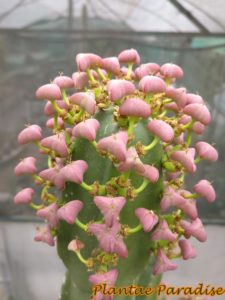
Planters and Need to re-pot. Best pots for Indian conditions are thick terracota pots which offer evaporative cooling as well as insulation against heat. Having said that there is really no fun if you have lovely plants which cannot be displayed when friends are at home for socializing. In that case rather than buy a decorative pot buy a planter. Go in for Pot in Pot concept. Decorative Planter remains inside the house while pots with plants can be interchanged at will. Also when you buy plants from nurseries keep in mind that growing a plant is a commercial venture, therefore the cheapest media, pot and space saving techniques have been used. Plant is likely to be root bound at the time of buying. You can consider re-potting into a larger pot for most cases immediately upon purchasing.
Media . The cheapest media available for commercial growing is cocopeat because it solves lot of logistics issues. Cocopeat itself is not a bad media but you need to understand the media. First is its high water retention property. This needs additives like thermocole or perlite for aeration. Secondly, if at all it goes completely dry it becomes hydrophobic, ie , repels water. It is very tedious to re-hydrate it. So plants purchased in cocopeat should be re-potted in media which you are comfortable in handling. Leaving a plant in cocopeat for long is not good.
To sum it up – Nothing is impossible. Some causalities will be there, there is a learning curve involved, ready made answers are hard to come by, but then there are similar enthusiasts all around you. There are people growing cool growing Carnivorous plants in Kerala, Maintaing a huge Euphorbia collection tucked in small town in hot plains of Eastern Uttar Pradesh, maintaining South African Mesembs in Hills of Uttrakhand, Breeding waterlilies in small tubs on terraces, Growing Tropical water lilies in snowbound Manali, Growing African Caudeciformes from seed in western UP and Growing Air plants in NCR ! . So your passion can take you anywhere…
And to end it with a Quote …
A garden requires patient labor and attention. Plants do not grow merely to satisfy ambitions or to fulfill good intentions. They thrive because someone expended effort on them. Liberty Hyde Bailey
Live n Learn n Happy growing.
Maneet @ Plantae Paradise
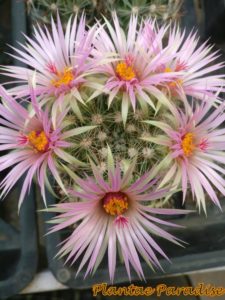
Good read!
Enjoyed it and much needed reminder forcme from time to time. Thanks very much.
Excellent . Thanks for the write up. Need these reminders time to time .
Thank you for such a detailed explanation. There is never “a one hat fits all” solution.
We need constant experimentation with setting up a right growing environment -and our plants r the actual indicators of whether we are on the right track.
So wish I could print and paste a copy of this on the entrance to every plant nursery in my area.Thank you again
I am a hobbyst keeping cacti and succulents happily I really appreciate your very logical and honest words about plant care rarely we find such truth from a business house your words compells me to recall Sutton seeds they also had the same passion keep it up bro. Best wishes to you all
Hi sir, I have opened a garden shop in Bhopal, where temperature goes upto 45 C in April, May and June,. I am also trying to sell few indoor plants like palm, dendrobium orchids. Can I try succulent plants from my outlets.
Maneet sir very well and lucidly explained. I’m guilty of being an ignorant plant lover!!! You’re one of the rare breeds who really think and live ” Customer First and Customer Education”. You’re an inspiration to many budding plant hobbyists who generally otherwise would miss such pearls of wisdom.
Thanks for your wonderful advice in managing these wonderful creations of nature.
Hi sir,
Does your cacti/ succulent plants soil media require any additives or can we use them as it is. Please advise.
Thanks
Sir, where can we feed for cactus and succulents as described by you in above article